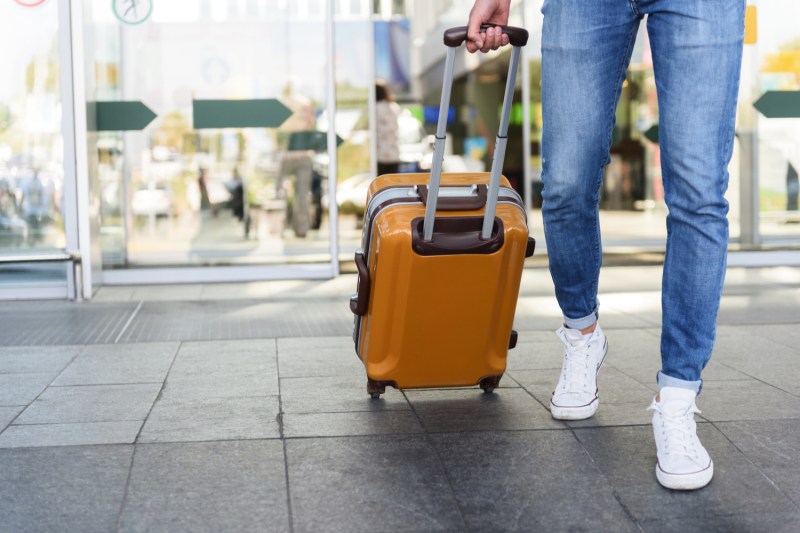When I invest in a piece of luggage, I expect it to last for years – but how long does luggage really last? The answer depends on several factors, including the quality, how often you travel, and how well you take care of it. When I first started traveling, I thought the most affordable suitcase at Target would be the only suitcase I’d need for the next decade…until I ended up with a broken wheel only two years into owning it.
So, while some high-end luggage brands promise a lifetime of durability, budget-friendly options may only survive a handful of trips before showing serious wear and tear. But in general, how long should luggage last? Here’s what you need to know about the lifespan of your luggage.
Factors that affect the lifespan of your luggage

I think it’s safe to say that most suitcases don’t last forever, but certain factors determine how long you can expect yours to hold up.
The quality of materials
The materials used in your luggage make a huge difference in its longevity.
Hard-shell suitcases made from polycarbonate or aluminum tend to be more durable than those made from ABS plastic, a material that makes up about 30% of hard luggage and can crack over time. On the other hand, soft-sided luggage crafted from high-denier nylon or ballistic polyester can be incredibly tough, resisting abrasions and tears better than lower-quality fabrics.
How often you use it
This one seems like a no-brainer, but how often you travel significantly affects how long your luggage lasts. If you only take a trip once or twice a year, a decent mid-range suitcase could last you a decade or more. But if you’re a frequent flyer logging thousands of miles each year, chances are your luggage will wear out much faster (sometimes within just a few years).
The wheels and handles
As I learned from personal experience, one of the first things to fail on a suitcase is usually the wheels or handle. Wheels on more budget-friendly suitcases often wear down quickly, and retractable handles can jam or break if they’re not well-built.
How you store and care for it
Have you ever considered where you store your luggage? Proper maintenance can extend its lifespan. For example, storing your suitcase in a humid basement or an attic with extreme temperatures might cause it to break down faster.
Storage company Store Space advises that before storing your luggage, you should inspect it for any damage and ensure it’s completely dry to prevent mold growth. The company also recommends using protective covers to shield your luggage from dust and potential scratches
How long should luggage last?

Now that we’ve covered the key factors that affect durability, let’s talk numbers. How long should luggage last? Here’s a general breakdown:
- Budget luggage ($50–$150). Typically, it lasts two to five years with light to moderate use. Wheels, zippers, and handles are generally the first things to break.
- Mid-range luggage ($150–$400). Can last five to 10 years with good care. These bags usually have better construction and materials.
- Premium and luxury luggage ($400–$1,500+). Often lasts 10 to 20 years or more, especially if the brand offers lifetime warranties or repair services. Brands like Sterling Pacific, as well as Tumi, Rimowa brand suitcases, and Briggs & Riley are known for their durability.
Remember that if you travel frequently, even high-end luggage may wear out in five to 10 years. However, occasional travelers might find that a well-made suitcase lasts a lifetime.
When to replace your luggage

Even the best luggage can wear out eventually. Here are some signs it’s time for a new suitcase:
- Broken wheels or handles. If your wheels don’t roll properly or your handle won’t retract, replacing the suitcase might be more cost-effective than repairing it.
- Cracks, tears, or structural damage. A cracked hard shell or a torn fabric case can weaken the entire suitcase.
- Faulty zippers. If the zipper constantly sticks or has broken teeth, it could lead to significant travel mishaps.
How to make your luggage last longer
If you want to squeeze every last mile out of your luggage, follow these tips:
- Don’t overstuff your suitcase. Overstuffing puts strain on zippers and seams, which can lead to premature wear.
- Use luggage covers. Protect hard-shell suitcases from scuffs and scratches with a cover.
- Handle with care. Don’t drag your suitcase up stairs or force the handle.
- Store properly. Keep luggage in a cool, dry place, and don’t stack heavy items on top of it.
So, how long should luggage last?

How long should luggage last? Well, the answer depends on its quality, how often you travel, and how well you take care of it. A budget-friendly suitcase might only last a few years, while a high-end piece could serve you well for decades. If you invest in well-built luggage and maintain it properly, you can maximize its lifespan and avoid the hassle of frequent replacements.




